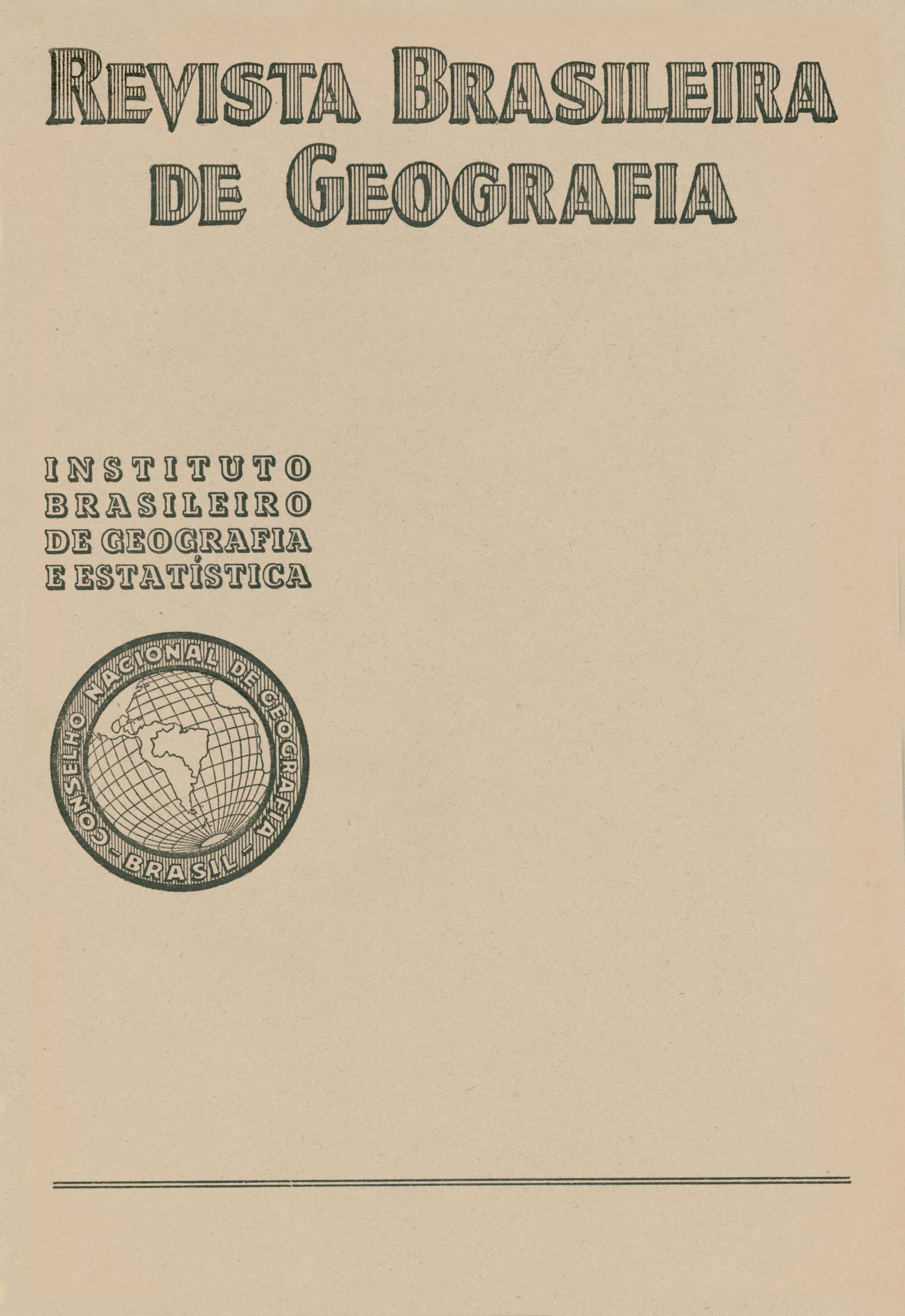Aspectos geo-humanos de Mato Grosso, Corumbá
Resumo
When for the second time in command of the garrison of Corumbá the author, former professor of geography at the Milita1y Academy of Realengo, was promoted to the mak of general
During is stay in that region he devoted himself to an attentive study of its peculiar conditions and problems which he explained later in a lecture given under the auspices of the organizing Committee of the 10th Brazilian Congress of Geography
He began by his trip from São Paulo to Porto Esperança where the Noroeste Railway ends just short of Paraguay river waiting for the bridge and the remaining stretch of the projected route which will go as far as the town where construction of the Brazil-Bolivia Railroad had started
Before retiling on board the "Fernandes Vieira", the boat that would take him through his long trip, he observerd the river communities defined by their essential features as, for instance, Campo Grande
He then considered the River, the Pantanal (swampy or flood plains), and the Vegetation. Here, to quote the author's concept: "If it is true that the Paraguay valley is bounded west and east by the massifs developing laterally from north to south, - the Brazilian massif and the pre-Andean massifs -, it is no less true that the bottom of this valley is occupied by two strikingly conspicuous landforms different from each other: The River and the Pantanal
The river, the course of which is known to extend for some 2 500 km, is navigable almost the whole length
On either side of the stream, always the swampy plains with their reddish soil beneath the scrub forests and pastures during the best season of the year, and covered by water in the times of serious floods
The Pantanal vegetation is highly distinguished from that found in surrounding areas, though having all the fundamental types of plant life: woody, shruby, marshy and prairie formations
The chief urban unit is simply defined The modern town of Corumbá was built on the huge flat-topped calcareous block, which, as an integrating element of the Albuquerque massif, rises above adjacent semi-flooded plains Rectilinear arrangement of streets crossed at light angles A great step in progress resulted from the construction of the railway having started in this town to link it with Santa Cruz de la Sierra
To the author the son of Corumbá, born and grown to maturity amid the green landscapes of the swampy plains, is a mild fellow; he does reflect well before acting; he is not hasty Along with him aliens from various origins mingle in harmony
And surely out of the amalgamation of these elements now being assimilated there a superb economic advance will result






